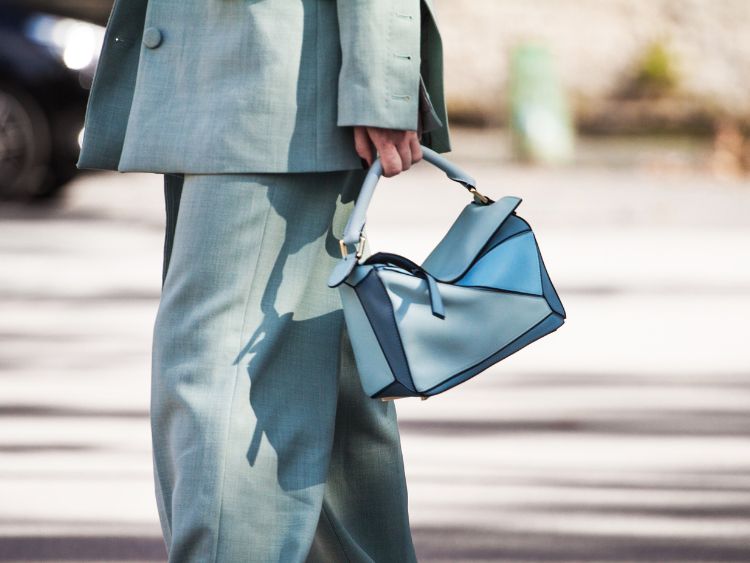The Roaring Return to Elegance
The 1930s were a decade of contrasts. While the world was recovering from the Great Depression, fashion thrived, reflecting a mix of necessity and extravagance. The sleek, streamlined looks of the 1920s gave way to more structured, elegant designs in the 1930s. Even though resources were scarce, people found ways to maintain their style, and Hollywood’s Golden Age influenced wardrobes worldwide.
Fashion in the 1930s wasn’t just about clothes; it was about expressing resilience and grace. The era saw the rise of iconic styles that still inspire today’s fashion trends. From glamorous evening gowns to sharp, tailored suits, the 1930s offered something for everyone.
Key Fashion Trends of the 1930s
- Bias-Cut Dresses: The bias cut, introduced by French designer Madeleine Vionnet, was a defining feature of 1930s women’s fashion. This technique allowed fabric to cling to the body in a flattering way, enhancing natural curves. It became popular in evening gowns and day dresses alike.
- Shoulder Pads: Structured shoulders became a significant trend in the late 1930s. Initially used in suits, shoulder pads gave a powerful silhouette, a look that would dominate the 1940s.
- Pleated Skirts and Blouses: Skirts became longer, often reaching mid-calf. Paired with pleated blouses, they created a polished, refined look for everyday wear. High necklines and collars were common, adding to the modesty and sophistication of women’s clothing.
- Hats and Gloves: No outfit was complete without accessories. Hats became smaller and more tailored, and gloves were essential for formal occasions. Cloche hats, a carryover from the 1920s, were popular in the early 1930s before gradually giving way to more structured and wide-brimmed styles.
- Men’s Suits: Men’s fashion in the 1930s took a turn toward more fitted, tailored looks. Suits became slimmer, with narrower lapels and high-waisted trousers. Double-breasted jackets, often with peaked lapels, were all the rage.
Hollywood’s Influence on 1930s Fashion
When we talk about 1930s fashion, we can’t ignore the profound impact of Hollywood. The silver screen became a major source of inspiration for everyday style. Stars like Jean Harlow, Greta Garbo, and Clark Gable set trends with their glamorous on-screen looks.
Hollywood glamorized luxurious fabrics like satin, silk, and velvet, which were often used in evening wear. Long, flowing gowns, often adorned with sequins and beads, were popular for formal events. Women wanted to mimic the elegance they saw in the movies, and Hollywood fashion designers like Adrian (known for designing costumes for MGM) became household names.
Fabric Choices in the 1930s: Function Meets Style
During the 1930s, practicality and luxury went hand in hand. While many families were tightening their belts due to economic hardship, fashion didn’t lose its allure.
- Wool and Cotton: For daily wear, wool and cotton were the go-to fabrics. These materials were affordable, durable, and versatile, making them perfect for both men’s and women’s clothing.
- Silk and Satin: Silk and satin were favored for formal attire. These fabrics draped beautifully, making them ideal for the popular bias-cut dresses and evening gowns. Satin became a symbol of old-Hollywood glamour, seen frequently on the red carpet.
- Rayon: As a cheaper alternative to silk, rayon became increasingly popular. It mimicked the look of silk but was far more accessible to the average person.
Fashion Icons of the 1930s
The fashion of the 1930s wouldn’t be complete without mentioning the key figures who popularized these trends. From actresses to designers, these individuals shaped the style of the era:
- Jean Harlow: The “Platinum Blonde” made waves with her daring fashion choices and sultry style, influencing the eveningwear of the time.
- Marlene Dietrich: Known for her androgynous style, Dietrich was famous for wearing tailored suits, challenging traditional gender norms in fashion.
- Elsa Schiaparelli: Schiaparelli was one of the most innovative designers of the time, famous for her surrealist designs and collaboration with Salvador Dalí. Her bold use of color and unusual materials made her a pioneer in 1930s fashion.
Bullet Points: 1930s Fashion Essentials
- Bias-cut dresses: A revolutionary technique that emphasized the natural shape of the body.
- Tailored suits: Men’s suits became slimmer and more refined.
- Shoulder pads: These were first seen in women’s jackets and eventually became mainstream.
- Accessories: Hats, gloves, and belts were essential for completing any outfit.
- Fabric choices: Silk, satin, wool, and rayon were popular materials in 1930s fashion.
FAQs About 1930s Fashion
Q: How did the Great Depression influence 1930s fashion?
A: The Great Depression pushed people to be resourceful with their fashion. Many clothes were made at home, and designers used cheaper fabrics like rayon. Despite this, there was still a demand for glamorous styles, especially influenced by Hollywood.
Q: What was the role of Hollywood in shaping 1930s fashion?
A: Hollywood had a significant impact on 1930s fashion. Stars like Jean Harlow and Greta Garbo set trends with their glamorous looks, making evening gowns, luxurious fabrics, and bold accessories popular among the general public.
Q: Were shoulder pads popular in the 1930s?
A: Yes, shoulder pads became a major trend in the late 1930s, initially used in suits to create a powerful silhouette for women. This style became even more popular in the 1940s.
Q: What fabrics were commonly used in 1930s clothing?
A: Wool and cotton were commonly used for everyday wear, while silk and satin were popular choices for evening gowns. Rayon also became a widely used, affordable alternative to silk.
Summary
The fashion of the 1930s was a beautiful balance of elegance, practicality, and Hollywood glamour. Even during tough economic times, people found ways to look stylish and sophisticated. Whether it was the luxurious bias-cut dresses or the sharp tailoring of men’s suits, the 1930s left a lasting legacy in the world of fashion. Today, we still see the influence of this era in modern designs, proving that the glamour of the 1930s never truly goes out of style.

